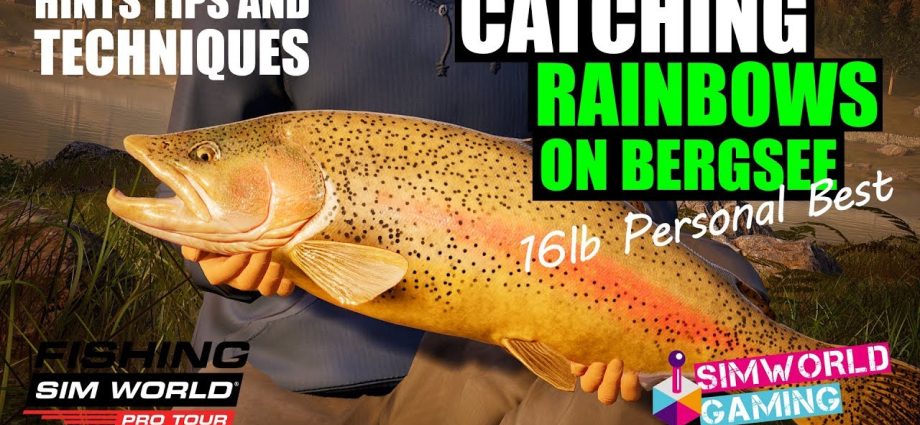Contents
How and what a sim is caught on, where it lives and when it spawns
Sima, “cherry salmon”, is the most heat-loving representative of the Pacific salmon. The weight of the fish can reach 9 kg. During life at sea, it can be confused with other types of salmon. It differs in a large number of spots and their size on the body than in coho salmon or chinook salmon. As in other cases, the identification of a salmon species requires a little experience and knowledge of the habitat. In breeding attire, the fish is easily distinguished by its olive body with cherry stripes and stains. Like most species of Pacific salmon, it has a migratory and residential form of males. Sima is considered the oldest “Pacific salmon”.
Ways to catch Sims
Catching sims is quite exciting. In the river, it is caught on float rods, spinning and fly fishing. In the sea you can catch trolling.
Catching a Sim on a spinning rod
The choice of spinning gear does not differ in special criteria. Reliability of the tackle should correspond to the conditions for catching large fish, as well as when fishing for other Pacific salmon of the appropriate size. Before fishing, it is worth clarifying the features of being on the reservoir. The choice of rod, its length and test may depend on this. Long rods are more comfortable when playing big fish, but they can be uncomfortable when fishing from overgrown banks or from small inflatable boats. The spinning test depends on the choice of the weight of the lures. Different groups of fish enter different rivers. Fishermen of Kamchatka and the south of Sakhalin, on the rivers of mass licensed fishing, are advised to use medium-sized baits. Thus, the use of rods with large tests is not required. But in the case of visiting other regions, this advice may not be successful.
Catching a Sim with a Float Rod
Sim in the rivers actively reacts to natural baits. For fishing, float gear is used, both with a “blank snap” and with a “running” one. In this case, it is worth considering the conditions of fishing. Fish are caught both in calm sections of the river and in places with a fast current.
Fly Fishing for Sims
The choice of tackle for catching a Sim on fly fishing depends on several points. First of all, on the size of the possible catch. If you catch a residential form or medium-sized populations, then one-handed rods of light and medium classes are suitable for this. The conditions of medium-sized rivers allow the use of a variety of lines with short or medium “heads”. This is facilitated by the fact that the bait for a medium-sized sim is small. The fish responds well to dry and wet flies. In some conditions, fly fishing for a resident form of a Sim can serve as a good practice for this fisherman, for beginners. As for trophy fishing, two-handed rods of middle classes, including switches, may also be required for fishing.
Baits
To catch sims on float gear, they use worms, meat, and “tampons” from caviar. Some anglers successfully use combined rigs, with the use of spinners, on which the meat of marine life is planted (Nakazima rig). For fishing on spinning, various spinners and wobblers are used. Among the wobblers, it is worth noting the lures of the “minnow” class. The size of baits is usually small. For fly fishing, various “dry” and “wet” flies, as well as medium-sized streamers, are suitable. Streamers, as a rule, mimic the developmental stages of juvenile fish. From eggs and larvae to medium-sized fry. Imitations can be made on different carriers: hooks, tubes or with a hook placed on a leader material. Lures such as “leech” can help out in case of a bad bite.
Places of fishing and habitat
Sima is the southernmost Pacific salmon. It occurs off the coast of Japan, in Primorye, on the coast of the Khabarovsk Territory and Kamchatka. On Sakhalin, it is caught in many rivers, licensed fishing is open. In the river, the fish occupies various relief depressions, often standing along the main channel, under overhanging bushes and near shelters. The passing form, more often, adheres to sections of the river with a fast current.
Spawning
Sima rises to spawn in the rivers in spring and until the beginning of July. Anadromous fish becomes sexually mature at 3-4 years. In spawning, along with anadromous fish, males of a residential dwarf form participate, which mature in a year. Moreover, after spawning, they do not die, but can spawn in the future. Nests are arranged on a rocky-pebble bottom in the upper reaches of the rivers. Spawning takes place in late summer – early autumn. After spawning, all migratory fish die.










